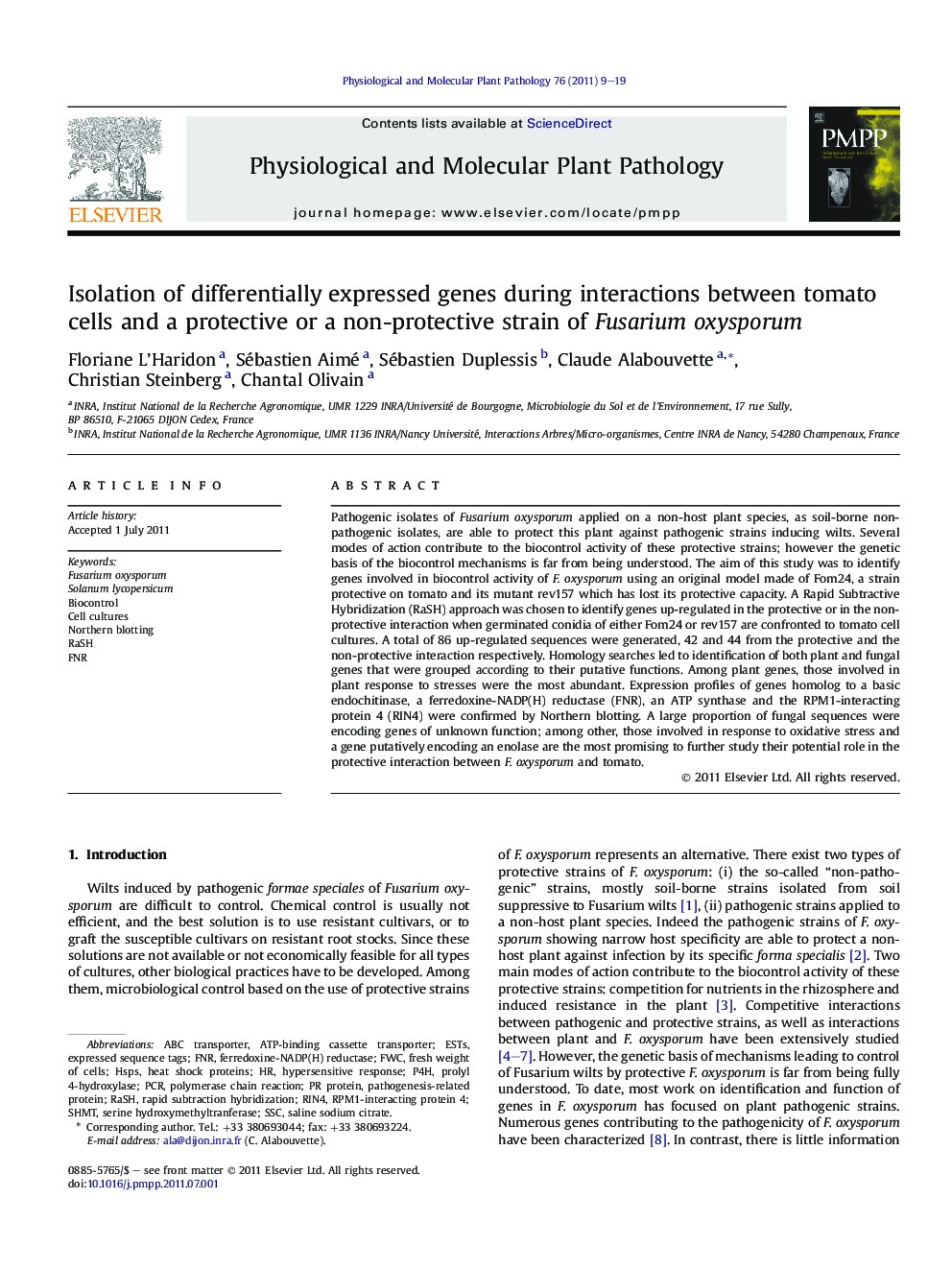| Article ID | Journal | Published Year | Pages | File Type |
|---|---|---|---|---|
| 2836480 | Physiological and Molecular Plant Pathology | 2011 | 11 Pages |
Pathogenic isolates of Fusarium oxysporum applied on a non-host plant species, as soil-borne non-pathogenic isolates, are able to protect this plant against pathogenic strains inducing wilts. Several modes of action contribute to the biocontrol activity of these protective strains; however the genetic basis of the biocontrol mechanisms is far from being understood. The aim of this study was to identify genes involved in biocontrol activity of F. oxysporum using an original model made of Fom24, a strain protective on tomato and its mutant rev157 which has lost its protective capacity. A Rapid Subtractive Hybridization (RaSH) approach was chosen to identify genes up-regulated in the protective or in the non-protective interaction when germinated conidia of either Fom24 or rev157 are confronted to tomato cell cultures. A total of 86 up-regulated sequences were generated, 42 and 44 from the protective and the non-protective interaction respectively. Homology searches led to identification of both plant and fungal genes that were grouped according to their putative functions. Among plant genes, those involved in plant response to stresses were the most abundant. Expression profiles of genes homolog to a basic endochitinase, a ferredoxine-NADP(H) reductase (FNR), an ATP synthase and the RPM1-interacting protein 4 (RIN4) were confirmed by Northern blotting. A large proportion of fungal sequences were encoding genes of unknown function; among other, those involved in response to oxidative stress and a gene putatively encoding an enolase are the most promising to further study their potential role in the protective interaction between F. oxysporum and tomato.
► Comparison of protective and non-protective F. oxysporum/tomato interaction. ► RaSH detection of plant and fungal genes. ► 42 and 44 up-regulated sequences in a protective and a non-protective interaction. ► Down-regulation of a plant FNR in a protective interaction. ► Potential involvement of a fungal enolase in F. oxysporum/tomato interaction.
